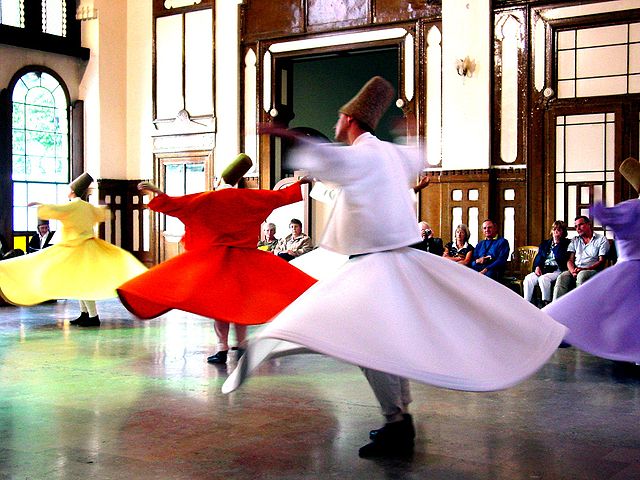
Sufi is a mystical tradition of Islam that is difficult to define. Carl Ernst writes: “In Arabic and Persian, there are dozens of terms for Muslim mystics with distinct and sometimes conflicting meanings, all of which are subsumed by the English word ‘Sufism’. In the Muslim world, there are multiple vocations, experiences and attitudes that underlie the word. Consequently, there is some tension between the insider’s and outsider’s use of the term.”
Islamic ‘insiders’ are also aware of differences between Sufi groups that beginners might not immediately understand. Earnst writes: “Some Sufi groups are rigorous in following Islamic law and ritual, and this insistence is often combined with adoption of the clothing and manners of the group’s country of origin. Other groups are flexible about their relation to Islam. And others frankly relinquish Islamic law and symbolism, defining Sufism as the universal aspect of all religions.”
Pir Vilayat Inayat Khan is a leading example of the universalist Sufi tradition. In his book, Awakening: A Sufi Experience, he offers an overview and specific meditation instructions, saying:
The secret of Sufism is to shift from our personal viewpoint to the Divine. The lost knowledge of the Universe – from which we are created – still resides within our consciousness. We can retrieve it by deepening and expanding our consciousness through meditation, prayer, and glorification. The goal in meditation is to reconnect our personal self to the transpersonal dimensions of our being.
There is a social role to Sufi meditation as well as a personal one: the Universe itself awakens and evolves when we do. Inayat Khan writes: “The future is taking shape here and now in the attitudes we hold, the choices we make, and the values we cherish. In the flash of time between the past and the future, it is possible to begin a new chapter in the evolving story of mankind.”
“We are knee-deep in a river searching for water,” writes Kabir Edmund Helminski. “Distracted by outer things and what we imagine they could mean to us, we lose contact with the source of our own Being. The well-being, the beauty and the love we seek outside if ourselves is truly within.”
Helminski teaches ‘voluntary attention’ as a meditation practice, and says, “The training of the attention is a necessary part of our spiritual training. And meditation is the tool for training attention.”
In her book, Come and Sit, journalist Marcia Nelson describes a group Sufi meditation practice, the Dhikr. Her book also gives advice about finding Sufi groups to study with.
Dhikr is remembrance of God and often consists of the repetition of God’s name. It can be silent or vocal, private or shared by a group, and is sometimes done in conjunction with breathing exercises or a movement designed to disrupt normal consciousness.
Her advice for beginner meditators:
Sufism is esoteric and it is best learned through a teacher and in the context of a group. Many Sufi groups now have websites and are relatively easy to find.
Patricia Monaghan, author of Meditation: The Complete Guide adds: “Sufi rituals, prayers and even meditation practices may be learned from books, but real learning comes only from teachers.” She describes Sufi breathing meditations and dancing, but also lists many resources for finding a teacher.
Sufi meditation, at its very heart, contains a message of rumination and deliberation that ends in a heightened awareness of the world around us. By escaping from the duality of the universe, one attains a better idea of the whole.
Do you practice Sufism? We would love to hear from you. Use the comment box below.


